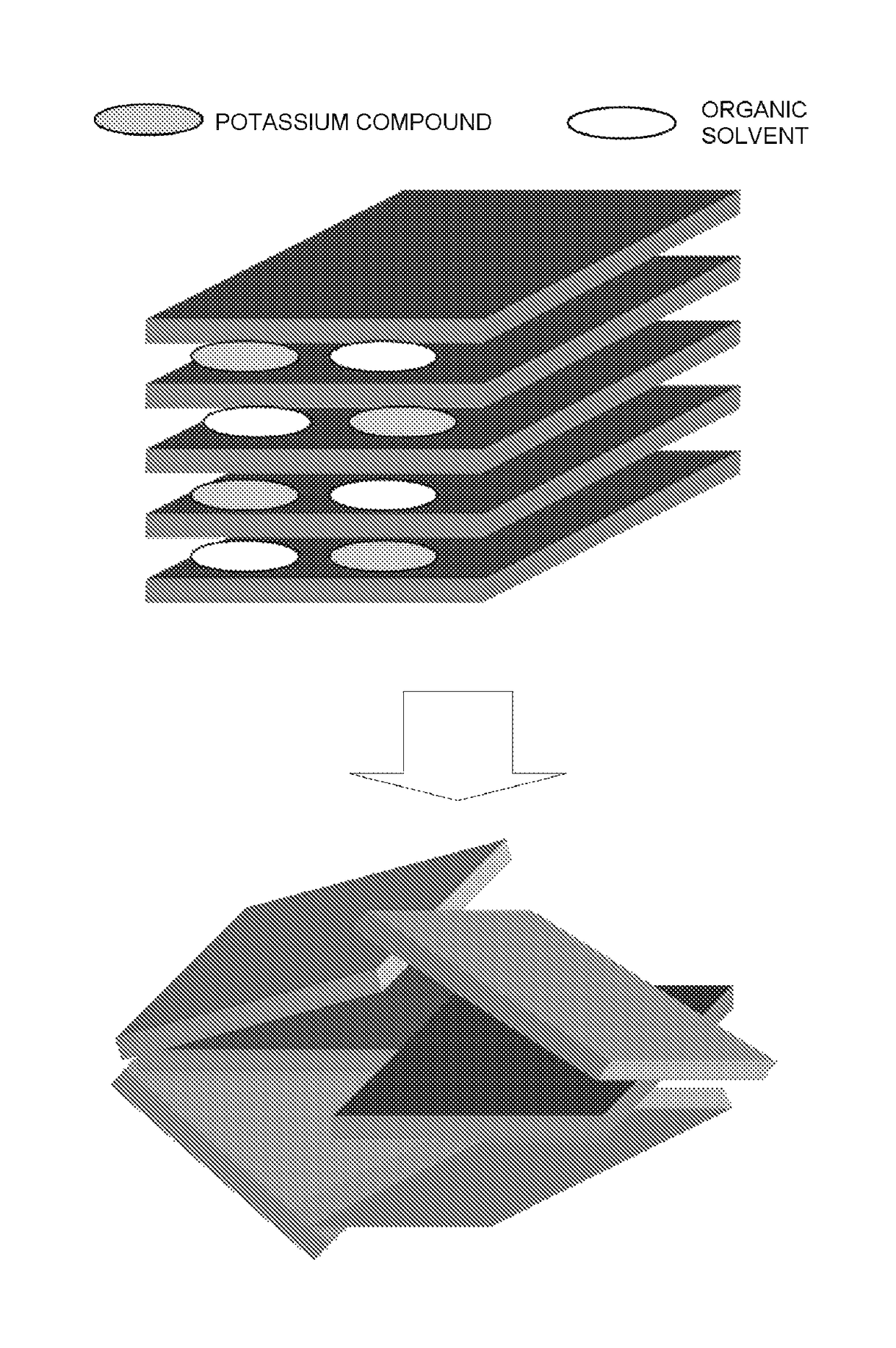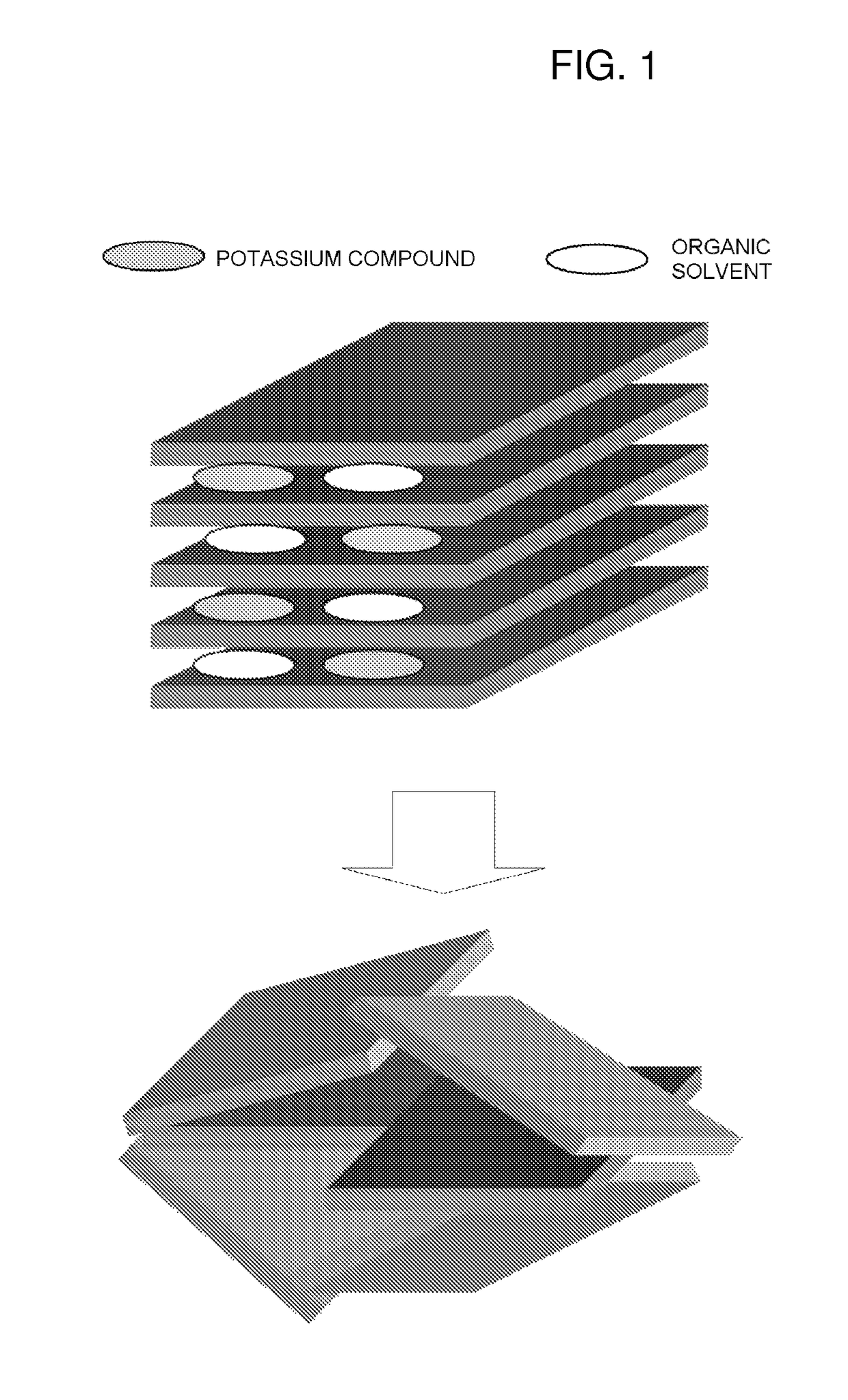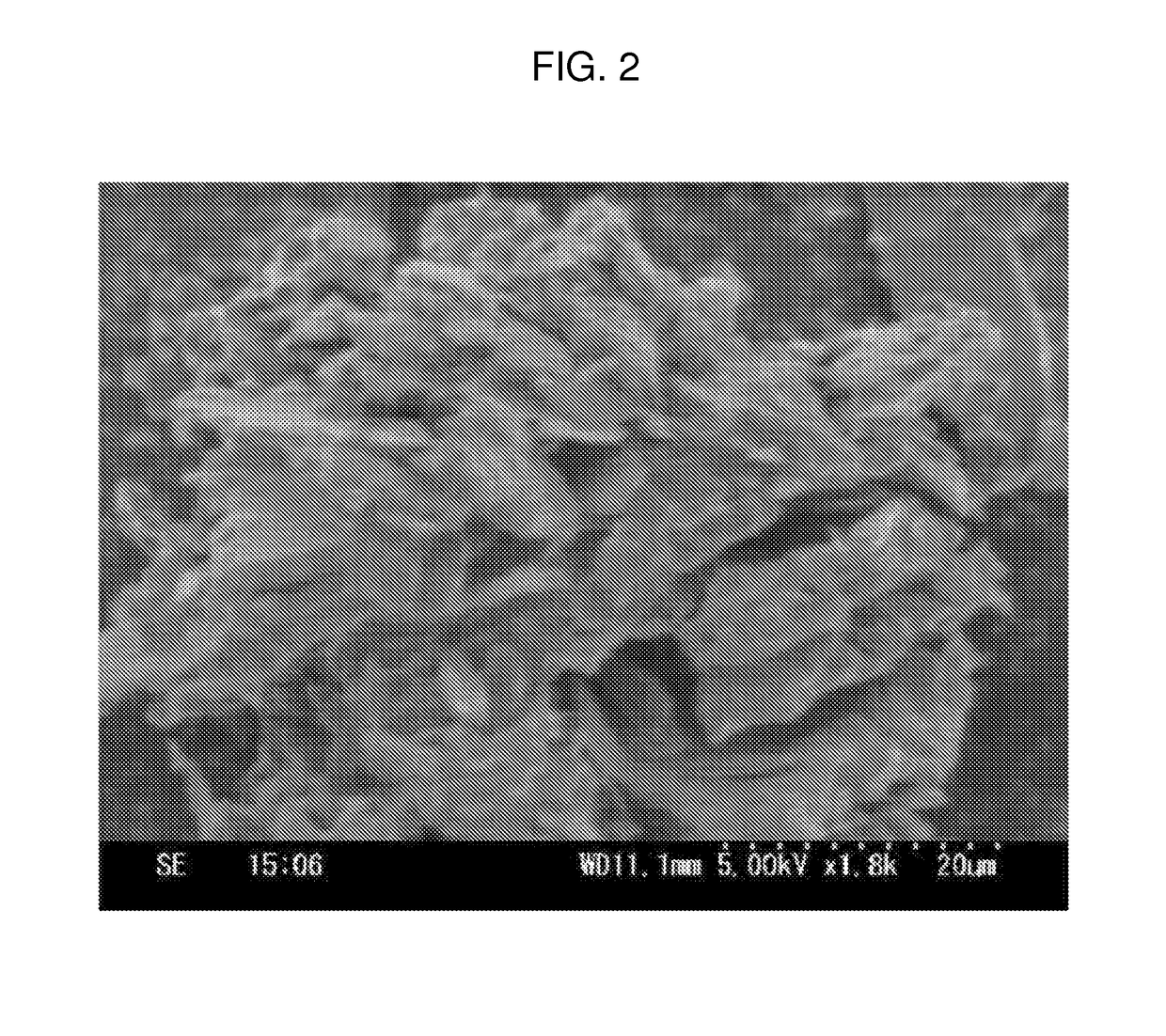Method for producing vacuum insulation material
a vacuum insulation and material technology, applied in the direction of thermal insulation for cooling apparatuses, building components, pipe protection, etc., can solve the problems of increasing the degree of vacuum, the degree of vacuum dropping gradually, and the rise of thermal conductivity, so as to achieve the effect of low temperature dependence, low thermal conductivity dependence, and low mobility of gas molecules
- Summary
- Abstract
- Description
- Claims
- Application Information
AI Technical Summary
Benefits of technology
Problems solved by technology
Method used
Image
Examples
example 1
[0073]A core starting material composition was prepared by kneading 400 g of talc (average particle size 14 μm, melting point 960° C.), 600 g of potassium hydrogen carbonate (average particle size 50 μm) and 150 g of glycerin. The core starting material composition was roll-formed to a sheet-like shape, 5 mm thick, to yield a green sheet (core molded body). The green sheet was set in an electric furnace and was fired for 6 hours at 900° C. by infrared heating. The fired green sheet (fired body) was placed in a vacuum drier, and was vacuum-dried at 150° C. for 2 hours, followed by cooling down to room temperature while vacuum was maintained inside the vacuum drier, to thereby produce a core. The core had a bulk density of 0.23 g / cm3 and a porosity of 90%. FIG. 2 illustrates an electron micrograph of the obtained core.
[0074]Next, the obtained core was placed into a three-side sealed bag of a laminate film comprising polyamide, aluminum foil and polyethylene, and the whole was vacuum-s...
example 2
[0076]A core was produced in the same way as in Example 1, but herein the core molded body of Example 1 was set in a microwave heating device, and the core molded body was fired through heating at 900° C., by being irradiated with 2.45 GHz microwaves for 60 minutes. A vacuum insulation material was produced in the same way as in Example 1 using the obtained core, and thermal conductivity was measured in the same way as in Example 1.
[0077]The core had a bulk density of 0.23 g / cm3 and a porosity of 90%. The thermal conductivity of the obtained vacuum insulation material, at an average temperature of 20° C., was 0.003 W / mK.
example 3
[0078]A core was produced in the same way as in Example 1, but herein the core molded body of Example 1 was set in a microwave heating device, and was heated at 900° C. by being irradiated with 2.45 GHz microwaves for 20 minutes, after which the core molded body was set in an electric furnace and was fired for 1 hour at 900° C. through infrared heating. A vacuum insulation material was produced in the same way as in Example 1 using the obtained core, and thermal conductivity was measured in the same way as in Example 1.
[0079]The core had a bulk density of 0.23 g / cm3 and a porosity of 90%. The thermal conductivity of the obtained vacuum insulation material, at an average temperature of 20° C., was 0.003 W / mK.
PUM
| Property | Measurement | Unit |
|---|---|---|
| particle size | aaaaa | aaaaa |
| temperature | aaaaa | aaaaa |
| temperature | aaaaa | aaaaa |
Abstract
Description
Claims
Application Information
 Login to View More
Login to View More - R&D
- Intellectual Property
- Life Sciences
- Materials
- Tech Scout
- Unparalleled Data Quality
- Higher Quality Content
- 60% Fewer Hallucinations
Browse by: Latest US Patents, China's latest patents, Technical Efficacy Thesaurus, Application Domain, Technology Topic, Popular Technical Reports.
© 2025 PatSnap. All rights reserved.Legal|Privacy policy|Modern Slavery Act Transparency Statement|Sitemap|About US| Contact US: help@patsnap.com



